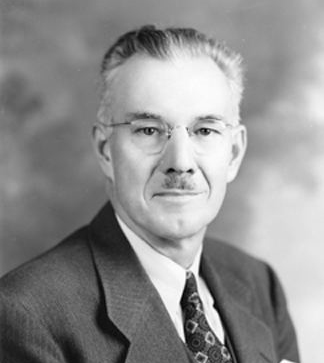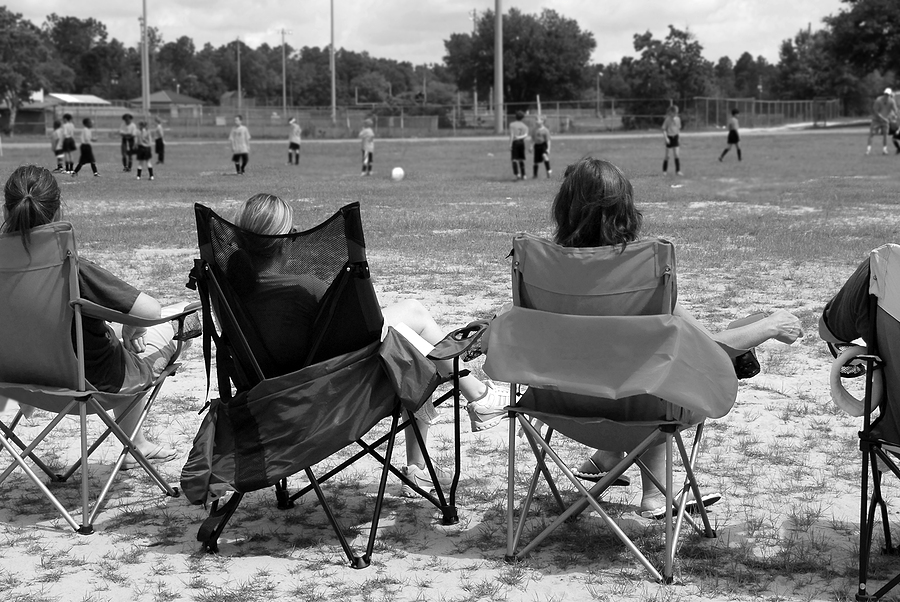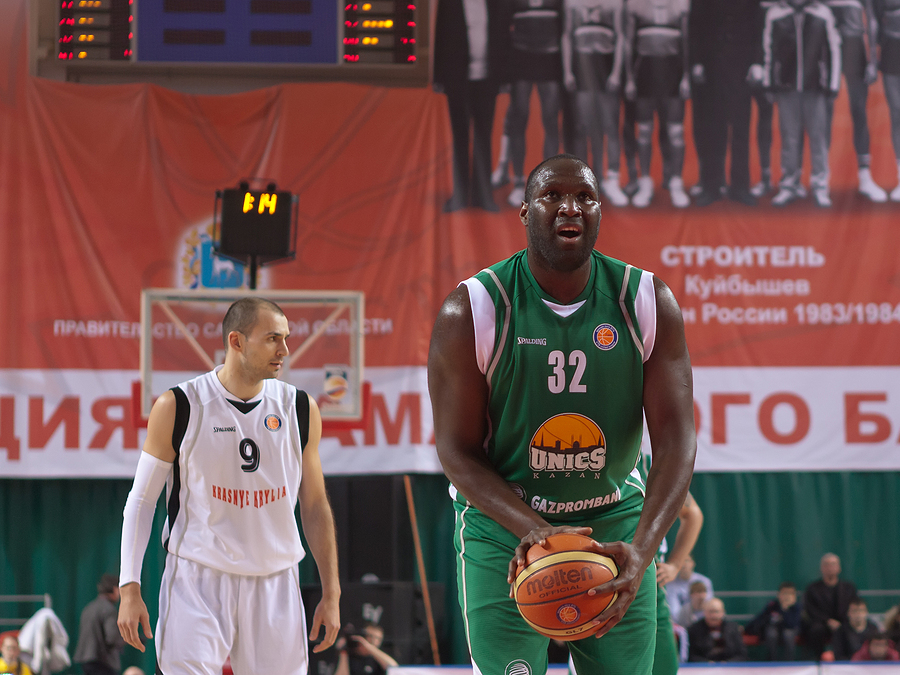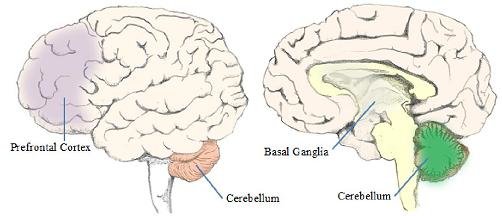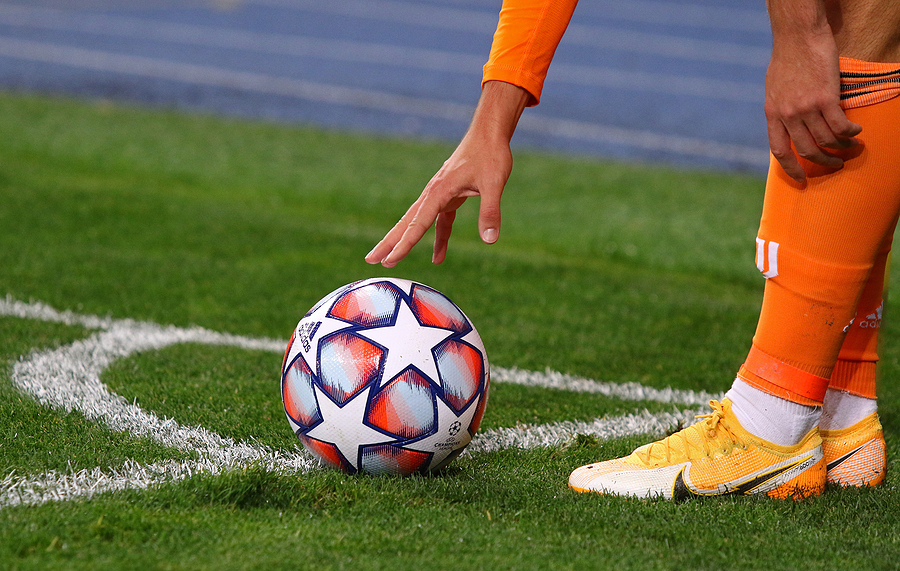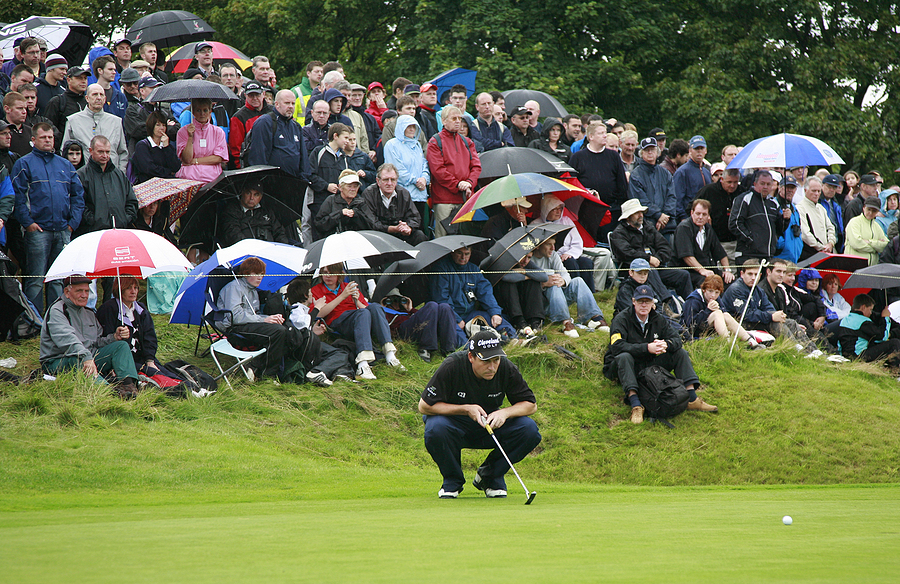














I am guessing that when you think of sport psychology books, you imagine publications by academics that have sold a few thousand copies. The issue is that most of these books are designed to be for practitioners and not the performers. There are books written with athletes and performers in mind, but typically, they are limited in their scope. So we asked our growing team of sport and performance psychologists about what books they suggest to their clients.
Below, in no particular order, are these publications. As you can see many of them are not sport psychology books per se, but together they form a handy toolkit for anyone interested in the mental aspects of human performance. If you think we are missing one (or more), please add the details to the comments section at the very bottle of the list.
The Third Space by Dr Adam Fraser
Brian says…
This 300-page book highlights that we tend to carry our mindset from one task to the next, which impacts our capacity to focus on the ensuing task. This book focuses on The Third Space, the transition between the first activity and the second, to enable us to “show up” for whatever comes next.
Using the example of tennis players and discussing the 3 Rs, Reflect Rest Reset – talks about how very little separates the top tennis players in terms of skill, ability and fitness. However, research has found that what separates the greats from the rest is, regardless of a good shot or bad shot or a good match, bad match, the ability to reflect (and learn) on what just happened, Rest (be it through breathing, mindfulness, etc) and then Reset for the next point, match or game.

The Brain That Changes Itself by Norman Doig
Brian says…

This work uses neuroscience and research to explain that our brain is plastic, malleable and changeable. And the massive benefit to us as humans of it being that way.
We are never too old to learn new tricks. We can build our resilience and develop new skills and ways of looking at the world throughout our lives and for as long as we are alive.
Breath by James Nestor
Brian says…
If you watch the Olympics or any high-profile sport, you notice that most athletes breathe more purposefully.
There is possibly no more important action to prepare the body and mind for performance than breathing. This book highlights that even minor adjustments to breathing practices can positively impact performance and have a myriad of impacts on overall health and immunity, sleep and general well-being.

Atomic Habits by James Clear
Darren says …

This fantastic read contains incredible insights into creating long-lasting changes to human habits. James Clear has presented both his personal experiences and scientific research in a way that’s very practical to accomplish.
We often believe that habitual changes must be drastic; however, the book highlights that this does not need to be the case. There is a focus on making tiny and very doable actions on an ongoing basis that, if maintained, can make fabulous improvements to our lives.
The book summarises one of our favourite mantras at Condor Performance: “Trust the process and let the results take care of themselves.”
A Liberated Mind by Dr Steven C. Hayes
Darren says …

Without a doubt, Dr Steven C. Hayes has made a considerable contribution to psychology with his research on Acceptance and Commitment Therapy and the development of Psychological Flexibility.
Dr Hayes takes you through the six core processes that help build psychological flexibility and is packed with diverse examples of their application. It is well supported by research, but you do not have to be an academic to understand it. It is very digestible to all audiences, and very importantly, it contains practical exercises that you can take away and use immediately. This book supports many life and performance-enhancement strategies. It’s a game-changer.
Madalyn says …
This powerful book is centred around ‘Psychological Flexibility’, a term referring to being open and willing to engage with uncomfortable internal experiences (thoughts, feelings, memories) so that they no longer stop us from committing to the actions that are important to us.
This book contains excellent insight into the evidence-based practice of Acceptance and Commitment Therapy (ACT), a framework the Condor Performance team use to help their sporting and non-sporting clients lean into discomfort and not struggle with it. ACT is based on the premise that our problem-solving mind is hardwired to avoid, suppress and fight off uncomfortable internal experiences. To live a full and meaningful life, we need to have a more ‘flexible’ relationship with our mind where we notice, observe and accept these experiences, reflect on our values and focus on committed action towards our long-term goals. Much of our work at Condor Performance is about our clients’ relationships with internal experiences. Therefore, I highly recommend this book to anyone who wants to learn more about our work or is looking to improve their performance.
The First Rule of Mastery: Stop Worrying About What People Think of You by Dr Michael Gervais
Harley says …
Fear of judgment and what people think of us (recently defined as “FOPO” – fear of people’s opinions) is a common theme that many of our clients struggle with, and often, FOPO can constrain or limit our capacity to realise our full potential. In The First Rule of Mastery, Michael Gervais outlines exactly what FOPO is, what causes FOPO, and, most importantly, what we can do to overcome FOPO.
This is helpful reading for all performers but especially valuable for those involved in team sports.

The Resilience Project by Hugh van Cuylenburg
Harley says …

Based on his experience teaching in India, The Resilience Project details a framework for developing skills and behaviours to help us live more fulfilling lives. Gratitude, empathy, and mindfulness are desirable behaviours and traits we can all benefit from incorporating into our daily lives.
They can help us with our mental health, mental aspects of performance, and associated performance outcomes. Being resilient is a crucial attribute of high performers, and The Resilience Project is an excellent introduction to those looking to learn more about it.
Legacy: What The All Blacks Can Teach Us About The Business of Life by James Kerr
Harley says …
One of my all-time favourite books and the book I recommend the most to my clients. Based on the esteemed culture of one of the most successful sporting teams in history, Legacy provides outstanding lessons in culture and leadership that can benefit individuals, teams, athletes, coaches, and other leaders. If you want to be a high performer and/or succeed in your chosen endeavour, the insights from this book will benefit you enormously.

Do Hard Things by Steve Magness
Harley says …

It is a terrific book that redefines what toughness is.
Combining a great blend of the latest scientific knowledge about psychology and human performance with real-world experience from athletes and coaches, Do Hard Things is a roadmap for overcoming hardships, facing challenges, and striving to succeed. Informative, practical, and accessible, this book will help you build real toughness.
The Practice of Groundness by Brad Stulberg
Harley says …
This excellent book explores many of the themes I would use regularly with my clients and encourages all high performers to practice.
These key themes include being present, focusing on processes over outcomes, being patient, connecting with your values, and cultivating a sustainable approach to high performance. Combining the latest scientific knowledge with ancient wisdom, The Practice of Groundness will provide you with critical techniques and practical skills to help you on your journey towards success.

Man’s Search For Meaning by Viktor Frankl
Harley says …

It is one of the most powerful and influential books I have read. Viktor Frankl’s lessons about his experience in concentration camps in WWII are incredibly insightful. Whether we are chasing big or little wins, all of us will benefit from these observations.
While suffering may be inevitable, we can choose how we respond and find meaning in the suffering that allows us to find and pursue purpose. Ultimately, pursuing what matters to us (i.e., our purpose) is our most important human driver.
A Still Quiet Place For Athletes by Amy Saltzman
Charlotte says …
It is an excellent book for athletes committed to training their minds. So often, it is the internal chatter that prevents athletes from being present in the moment.
This book guides the reader through many psychological skills that encourage them to let go of their internal chatter and focus on the moment. I appreciate the book’s clear descriptions of each skill and opportunities for practice and reflection. This ensures the skills are correctly learnt and can be accessed quicker in heightened emotions.

The Happiness Trap by Dr Russ Harris
Chris says …

An excellent book for sporting and non-sporting performers, The Happiness Trap provides a user-friendly introduction to Acceptance and Commitment Therapy (ACT). Some of the critical components of ACT that are covered in depth and apply to performance enhancement include:
(1) Mindfulness. Being aware of the present moment without judgment helps us recognise how we respond to situations and redirect ourselves to practical actions.
(2) Acceptance. Acknowledging unwanted thoughts and emotions helps reduce our natural internal struggle with them.
(3) Commitment. By identifying our values (things that give us a sense of meaning), we can become more purposeful in our behaviours. In other words, deliberately acting aligns with what is important to us.
Happy reading (no pun intended)!
Search Inside Yourself by Chade-Meng Tan
James says …

Written by the mindfulness expert trainer for Google executives. I recommend this book as it’s a great guide on “how to” learn to practise mindfulness for those interested.
Many books and authors will tell you that mindfulness is terrific and benefits life, business, health and performance. But this book gives practical processes on how to start and exercises to try and practice to become more adept at mindfulness. On top of that, it’s written in a simple and conversational style that I find more casual than many books.
The Coaches by David Becker and Scott Hill
James says …

‘The Coaches’ is a collection of interviews with twelve high-profile sporting coaches across various sports in Australia. It skillfully brings together hundreds of little pieces of advice and wisdom through many years of coaching at the elite level.
If you’re an aspiring athlete or coach, it’s always worth knowing what the top coaches look for in their athletes, what they feel brings success and what they see as pathways to failure through their time at the top.
The Score Takes Care Of Itself by Bill Walsh
Gareth says …
This semi-autobiographical account of Bill Walsh’s work with the San Francisco 49ers is arguably one of the most beneficial when learning why a process focus is far more effective than an outcome orientation.
As the book suggests, Bill and his coaching staff did not do a lot of goal-setting for the outcomes. Instead, they went through every single aspect of the organisation and tried to improve it. In doing this, there was a reduced need to obsess about sporting results. These took care of themselves. And the consequence is that they became one of the most successful teams in the history of the NFL.

Stolen Focus by Johann Hari
Gareth says …

‘Stolen Focus’ is a slightly different book to be included in this select list of sport psychology books. Given the importance of focus in modern-day performance psychology, it would be remiss not to include at least one book that explains why focusing is so hard for so many people nowadays.
This book, by one of my favourite authors, is a must-read for anyone who assumes that time spent stuck to their smartphone is normal and healthy. Yes, that’s right, performance enhancement is sometimes just doing the simple things. Like turning off your phone at meal times!
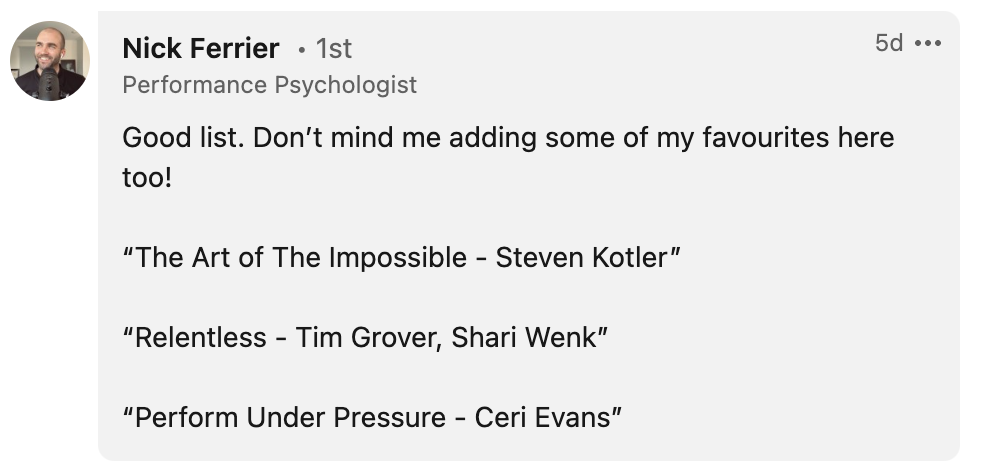
If you feel like this list of sports psychology books is missing any that you have read and would recommend, please add the details to the comments section below. Ideally, include the title, author, and WHY you would suggest to anyone looking to further their performance psychology knowledge. After more than one individual has mentioned the same publication, we will consider moving it up to the official list above.



